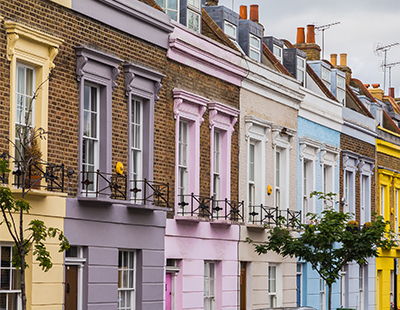House prices in London are projected to fall in the short-term, down by two per cent by the end of 2018 and a further dip next year according to a new analysis by consultancy PwC.
However, the picture across the result of the country is more optimistic.
Annual UK house price growth is projected to slow to around three per cent in 2018 and is likely to remain around this level until 2025, says PwC. This means the average UK house price is estimated to rise from £221,000 in 2017 to around £285,000 by 2025.
In London, however, prices are set to dip for at least the next 18 months.
“Affordability in the capital has been stretched due to three factors: a high deposit saving hurdle, increased economic uncertainty relating to Brexit acting as a drag on international investment, and reduced numbers of housing transactions due to stamp duty changes” explains Richard Snook, senior economist at PwC.
“However, London house price growth should pick up again from 2020. We project the average price of a London home in 2022 to be £509,000, compared to £141,000 in the north east. This means the large affordability gap between the capital and other UK regions is set to remain.”
In a complementary analysis, PwC says increased stamp duty for higher valued properties has been one of the factors dampening London house price growth.
“While, in theory, 95 per cent of buyers are winners from the removal of the previous slab system, the increase in stamp duty for homes above this threshold appears to have contributed to an overall slowdown in the property market. High stamp duty rates are dissuading people from upsizing and downsizing which is affecting both ends of the market. Government should look at other options to kick start the housing market” insists Rob Walker, head of real estate tax at PwC.
Past rises in UK house prices have been driven by a number of factors, but one of these has been a lack of new housing supply. PwC’s analysis at the local authority level across England suggests a clear link between a lack of new housing supply, relative to population growth, and local house price growth since 2011.
This has been particularly marked in London, PwC estimates around 110,000 more homes would need to have been built between 2011 and 2016 to keep up with population growth.
Looking ahead, if the government can achieve its target of building 300,000 new homes a year in England by the mid-2020s, then this should exceed the increase in housing demand from projected population growth and therefore start to make up the backlog from past under-supply.
But PwC’s analysis suggests that many of these homes need to be built where demand is highest in London and the south east and the East of England to prevent a further worsening of affordability in those regions.
“Local targets need to be set and met for house building, linked to supporting infrastructure development, as well as national targets. Building new homes in the wrong places will only perpetuate England’s housing supply problems” claims Richard Snook.























Join the conversation
Be the first to comment (please use the comment box below)
Please login to comment